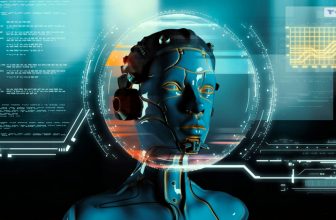
Data science vs machine learning: Data science and machine learning are two of the most popular and in-demand fields in the tech industry today. But what exactly are they, and how do they differ from each other? And, more importantly, how can they work together to create value and solve problems?
If these are some of the things you want to know about, I have you covered!
In this article, I will explore the definitions, applications, and benefits of data science and machine learning and the challenges and opportunities of integrating them.
I will also compare the skills, roles, and salaries of data scientists and machine learning engineers, and answer some of the common questions that people have about these fields.
So, keep on reading this blog till the end to learn more…
What is Data Science?

Data science is an interdisciplinary field that uses scientific methods, processes, algorithms, and systems to extract knowledge and insights from structured and unstructured data. Data science combines various disciplines, such as statistics, mathematics, computer science, domain knowledge, and communication, to analyze data and communicate the results to stakeholders.
We can apply data science to various domains and industries, such as healthcare, finance, education, e-commerce, social media, and more. Some of the common tasks and goals of data science are:
- Collection and cleaning: Gathering, storing, and preprocessing data from various sources, such as databases, web pages, sensors, etc.
- Exploration and visualization: Exploring the data to understand its characteristics, patterns, and distributions, and presenting the data in graphical or interactive forms, such as charts, dashboards, maps, etc.
- Analysis and modeling: Applying statistical and mathematical techniques to analyze the data and discover relationships, trends, and anomalies, and building predictive or descriptive models based on the data.
- Interpretation and communication: Interpreting the results of the analysis and modeling and communicating the findings and recommendations to the relevant audience, such as business managers, customers, or policymakers.
What is Machine Learning?

Machine learning is the branch of artificial intelligence that focuses on creating systems that can learn from data and improve their performance without explicit programming. It uses algorithms and models that can learn from data and make predictions or decisions based on the data.
Machine learning can be classified into three main types, depending on the nature and availability of the data and the feedback:
- Supervised learning: The system learns from labeled data, which means the data has the desired output or target variable. The system tries to learn the relationship between the input and output variables and make predictions for new data. Examples of supervised learning are regression, classification, and recommendation systems.
- Unsupervised learning: The system learns from unlabeled data, which means the data does not have the desired output or target variable. The system tries to find the underlying structure or patterns in the data and group or summarize the data. Examples of unsupervised learning are clustering, dimensionality reduction, and anomaly detection.
- Reinforcement learning: The system learns from its actions and feedback, which means it interacts with an environment and receives rewards or penalties based on its actions. The system tries to learn the optimal policy or strategy to maximize the rewards over time. Examples of reinforcement learning are game playing, robotics, and self-driving cars.
Data Science vs Machine Learning: Which is Better?

Data science and machine learning are not mutually exclusive but rather complementary fields. They both deal with data, but they have different focuses and objectives.
Data science is more concerned with understanding and explaining the data. On the other hand, machine learning is more concerned with learning from and predicting the data.
However, these two fields can also benefit from each other. Data science can provide the data preparation, exploration, and visualization that are essential for machine learning.
Machine learning can provide data analysis, modeling, and optimization that are useful for data science.
Therefore, the question of which is better is not meaningful, as they both have their own strengths and weaknesses, and they both can work together to create value and solve problems.
Data Science vs Machine Learning: How to Integrate Them?

Integrating data science and machine learning can be challenging but also rewarding. Some of the challenges and opportunities of integrating them are:
Quality and Quantity
Firstly, data is the fuel for both data science and machine learning. However, not all data is equal.
Data quality and quantity can affect the performance and accuracy of both data science and machine learning.
Therefore, ensuring that the data is reliable, relevant, and sufficient for the task at hand is important.
Ethics and Privacy
Secondly, data is also a source of ethical and privacy issues, especially when dealing with sensitive or personal data.
Data science and machine learning can pose risks and challenges to the data subjects, such as discrimination, bias, manipulation, or exploitation.
Therefore, it is important to respect and protect the data rights and interests of the data subjects and follow the ethical and legal principles and guidelines for data collection, processing, and sharing.
Collaboration and Communication
Lastly, data is also the medium for collaboration and communication, especially when working in a team or with stakeholders.
Data science and machine learning can require different skills, tools, and languages, which can create barriers and misunderstandings.
Therefore, it is important to foster a data culture and literacy and use common standards and platforms for data sharing, documentation, and presentation.
Data Science vs. Machine Learning: What are the Skills, Roles, and Salaries?

Data science and machine learning are both multidisciplinary and dynamic fields, which means they require various skills and roles and offer a range of salaries.
When it comes to the skills, roles, and, most importantly, the salary of both the career paths and professionals, it is important that we take a thorough look at them.
That is the reason why I have divided both of these into two parts. So, without further ado, let us jump into the content!
Some of the common skills and roles for data science and machine learning are:
Skills, Roles, and Salary in Data Science
- Skills: Data science skills include data collection and cleaning, data exploration and visualization, data analysis and modeling, data interpretation and communication, and domain knowledge. Some of the popular tools and languages for data science are Python, R, SQL, Excel, Tableau, Power BI, etc.
- Roles: Data science roles include data analyst, data engineer, data scientist, data architect, data manager, data consultant, etc. Data science roles can vary in their scope and focus, depending on the industry, organization, and project.
- Salaries: Data science salaries depend on many factors, such as the location, experience, education, and skills of the data professional. According to Glassdoor, the average salary for a data scientist in the USA is $113,309 per year, as of February 2024.
Skills, Roles, and Salary in Machine Learning
- Skills: Machine learning skills include data preparation and preprocessing, machine learning algorithms and models, machine learning frameworks and libraries, machine learning evaluation and optimization, and artificial intelligence concepts and applications. Some of the popular tools and languages for machine learning are Python, R, MATLAB, TensorFlow, PyTorch, Scikit-learn, etc.
- Roles: Machine learning roles include machine learning engineer, machine learning researcher, machine learning developer, machine learning analyst, machine learning consultant, etc. Machine learning roles can vary in their depth and breadth, depending on the field, domain, and problem.
- Salaries: Machine learning salaries depend on many factors, such as the location, experience, education, and skills of the machine learning professional. According to Glassdoor, the average salary for a machine learning engineer in the USA is $114,121 per year, as of February 2024.
Data Science vs Machine Learning: What is the Difference?

So, now you might have a better understanding of what data science and machine learning are. However, how do they differ from each other?
Data science and machine learning are not mutually exclusive, but rather overlapping fields. They both deal with data, but they have different focuses and objectives. Some of the key differences between data science and machine learning are:
- Machine learning is more concerned with learning from and predicting the data. On the other hand, data science is more concerned with understanding and explaining the data.
- Data science uses a variety of methods and techniques, such as statistics, mathematics, computer science, domain knowledge, and communication. In contrast, machine learning mainly uses algorithms and models, such as neural networks, decision trees, support vector machines, etc.
- Data science can use machine learning as a tool or a component, but not all data science projects involve machine learning. Machine learning can use data science as a prerequisite or support, but not all machine learning projects require data science.
- Machine learning usually has a single output type: a prediction or a decision. In contrast, data science can have different types of outputs, such as reports, dashboards, visualizations, models, etc..
Data Science vs Machine Learning: Examples and Cases

Data science and machine learning are two closely related but distinct fields. They have wide applications and benefits for various industries and domains.
But before delving into anything, it is best that you learn about some of the examples and real-life cases of the same.
Let me help you out with that!
Here are some examples and use cases of how experts use them in the real world:
Examples and Cases of Data Science
Data science is the process of extracting insights and knowledge from data using various methods, tools, and techniques.
Experts use data science for business intelligence, which involves analyzing data to understand a business’s performance, trends, and opportunities.
Data science is also used for customer analytics, which involves segmenting, profiling, and predicting customers’ behavior and preferences.
Data science can help businesses improve their products, services, marketing, and customer satisfaction.
Another use case of data science is fraud detection, which involves identifying and preventing fraudulent transactions, activities, or behaviors. It can help detect anomalies, patterns, and outliers in data that indicate fraud.
Data science can also be used for recommendation systems. This involve suggesting relevant and personalized items, products, or content to users based on their preferences, history, and feedback. It can help increase user engagement, retention, and revenue.
Examples and Cases of Data Science
Machine learning is the process of creating and training models that can learn from data and make predictions or decisions.
Experts use machine learning for image recognition. This involves identifying and classifying objects, faces, scenes, or text in images.
Machine learning can help with tasks such as face detection, face recognition, optical character recognition, medical image analysis, and self-driving cars.
It is also used for natural language processing, which involves understanding and generating natural language, such as speech or text.
Machine learning can help with tasks such as speech recognition, speech synthesis, and machine translation. They can also help in sentiment analysis, chatbots, and natural language generation.
Additionally, it can be used for self-driving cars, which involve controlling vehicles without human intervention. Machine learning can help with perception, planning, navigation, and control tasks.
Machine Learning vs Data Science: Challenges and Opportunities!

While you know almost everything a beginner needs to know about machine learning and data science, here are the final and some of the most important things almost everything must know about these two fields of study.
Data quality
Data is the fuel for both data science and machine learning, but not all data is created equal. It refers to data accuracy, completeness, consistency, timeliness, and relevance. Poor data quality can lead to inaccurate or misleading results, wasted resources, and lost opportunities.
Data quality can be improved by applying data cleaning, validation, integration, and transformation techniques and ensuring data governance and security. Data quality can also be enhanced by using data augmentation, synthesis, and generation methods. This can create new or additional data from existing data or other sources.
Privacy
Privacy is the right of individuals or groups to control how their personal or sensitive data is collected, used, shared, or stored. It is a major concern for both data science and machine learning. This is because they often involve processing large amounts of data that may contain personal or confidential information.
Privacy can be violated by unauthorized access, disclosure, or misuse of data or by inference or re-identification of data. It can be protected by applying data anonymization, encryption, masking, or differential privacy techniques and by following ethical and legal standards and regulations.
Privacy can also be enhanced by using federated learning, a distributed machine learning approach that allows multiple parties to train a model collaboratively without sharing their data.
Ethics
Next on the list, ethics is the study of moral principles and values that guide human behavior and decision-making. Ethics is a crucial aspect of data science and machine learning, as they often involve making decisions or recommendations that may significantly impact individuals, groups, or society.
It can be challenged by bias, discrimination, fairness, accountability, transparency, or explainability issues, and by unintended or harmful consequences of data science or machine learning applications.
Ethics can be ensured by applying ethical frameworks, principles, and codes of conduct and involving stakeholders, experts, and users in designing, developing, and evaluating data science or machine learning solutions. Solutions.
Furthermore, ethics can also be enhanced by using human-in-the-loop, human-on-the-loop, or human-in-command approaches, which involve different levels of human involvement, oversight, or control over data science or machine learning processes or outcomes.
Scalability
Scalability is the ability of a system or solution to handle increasing amounts of data, complexity, or demand. It is a key challenge for both data science and machine learning. This is because they often require processing large-scale, high-dimensional, or streaming data and building, training, testing, or deploying complex, sophisticated, or dynamic models.
Scalability can be achieved by applying parallel, distributed, or cloud computing techniques and by using scalable architectures, frameworks, platforms, or tools. It can also be improved by using dimensionality reduction, feature selection, or model compression methods. This can reduce data or models’ size, complexity, or redundancy.
Interpretability
Interpretability is the ability to understand the logic, reasoning, or mechanisms behind a system or solution. It is a desirable feature for both data science and machine learning. This is because it can help validate, verify, debug, or improve the results, performance, or reliability of a system or solution.
Interpretability can also help to build trust, confidence, or acceptance among stakeholders, experts, or users. It can be difficult to achieve for data science or machine learning, especially for complex, nonlinear, or black-box models, such as neural networks or deep learning.
It can be enhanced by applying interpretability techniques. These include feature importance, partial dependence, local explanations, global explanations, or counterfactuals. They can provide insights into a model’s input, output, or internal workings.
Interpretability can also be increased by using interpretable models, such as decision trees, rule-based systems, or linear models, which can provide intuitive or transparent representations or explanations of a model.
Wrapping It Up!
Data science and machine learning are two of the tech industry’s most exciting and rewarding fields today. They both deal with data, but they have different focuses and objectives.
Additionally, they both can benefit from each other, and they can work together to create value and solve problems. They both require a variety of skills and roles, and they both offer a range of salaries.
Suppose you are interested in learning more about data science and machine learning. In that case, you can check out some of the online courses, books, blogs, podcasts, and communities available online. You can also try some of the projects, competitions, and platforms that can help you practice and showcase your skills and knowledge.
Read Also:






